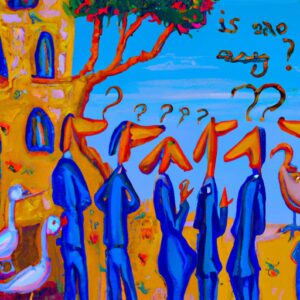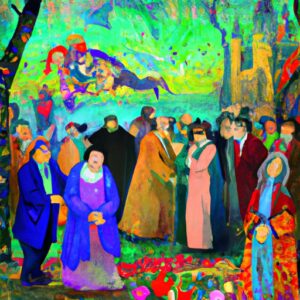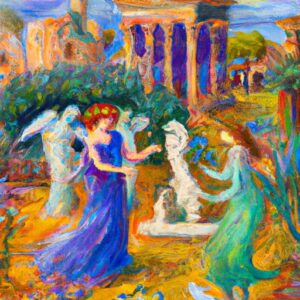Trouble Identifying the Gender of Italian Nouns Ending with ‘e’?
Not to worry! This article is here to help. We’ll provide a simple guide to make sure you can easily determine the gender.
Learn the simple rules, and you’ll be a pro in no time!
Gender rules for Italian nouns ending with ‘e’
Are you ready to guess the gender of Italian nouns ending in -e? Focus on certain patterns and exceptions to determine the answer!
Here’s a breakdown:
Nouns ending with ‘ay’ are usually masculine, while nouns ending with ‘ee’ are usually feminine. However, there are some exceptions where they can be feminine.
For instance, consider the word “male,” meaning “bad” in Italian, which is masculine. On the other hand, “mare,” which means “sea,” is also masculine. But then, there’s the word “giudice,” which can be both masculine and feminine, depending on the context. “Amore,” meaning “love,” can also be both, depending on how it’s used.
It’s important to keep these distinctions in mind, as they affect sentence agreement. Plus, some neuter nouns also end in -e. These don’t have any gender and are used to refer to non-living objects or concepts.
For example, “avvocato,” meaning “lawyer,” is typically masculine, while “dolce,” meaning “sweet,” is feminine.
Unveil the mysteries of gender in Italian nouns. Upgrade your language proficiency by mastering the rules and exceptions. Dive in today and start honing your communication with native speakers!
Recognizing Masculine and Feminine Nouns Ending with ‘e’ in Italian
Most Italian nouns ending in ‘a’ are feminine while those ending in ‘e’ or ‘o’ are masculine. However, exceptions exist.
Some words ending in ‘e’ can be both feminine and masculine. To help identify the gender of such nouns, here are some tips:
Study the endings. Learn the common patterns of masculine and feminine endings in Italian. Memorize the exceptions. Remember the cases where words ending in ‘e’ can be both genders. Practice with context. Observe the articles used with nouns in sentences. This will give you clues to determine their gender.
By applying these suggestions, you can become better at determining the gender of Italian nouns. So why defy gender norms when you can confuse yourself?
For instance, consider “scrittore,” meaning “writer,” which is typically masculine. “Studente,” meaning “student,” is also masculine. However, “università,” meaning “university,” is feminine. These examples emphasize the need to consider context and usage.
Exceptions in Italian Nouns Ending with ‘e’
Italian nouns ending with ‘e’ can be either masculine or feminine – but there are exceptions. Here’s a table of some of these unique exceptions:
Noun Gender
Caffe Masculine
Sole Masculine
Mare Masculine
Strade Feminine
Morte Feminine
Rinoceronte Masculine
These exceptions challenge traditional gender assignment patterns. However, they add depth to the Italian language.
For instance, “caffe,” meaning “coffee,” is typically masculine, as is “sole,” meaning “sun.” “Mare,” meaning “sea,” is also masculine. O
n the other hand, “strade,” meaning “streets,” and “morte,” meaning “death,” are both feminine. Surprisingly, “rinoceronte,” meaning “rhinoceros,” is masculine. These examples highlight the quirks of gender assignment in Italian nouns.
Contextual Clues for Gender in Italian Nouns
Italian nouns usually showcase particular patterns based on their endings, which often indicate if they are masculine or feminine. Here’s a table with common endings and the genders they correspond to:
Ending Gender
-o Masculine
-a Feminine
-e (for most words) Masculine
-e (for exceptions) Feminine
By looking at the endings and considering the context of the noun, learners can make more accurate guesses about its gender. However, there are exceptions and irregularities. Some nouns ending in -e may still be masculine, so it’s essential to look for other contextual clues.
Contextual clues can come from the noun itself, e.g. its ending or the words that typically accompany it. Also, clues may be found in the article, adjective, or pronoun used with the noun. For instance, an Italian noun ending in -a is likely to be feminine, while an -o ending suggests masculinity.
Understanding these contextual clues can help learners of Italian correctly assign the gender to nouns and boost their language proficiency. The division of nouns into masculine and feminine genders is rooted in Latin grammar and was inherited by Italian as a Romance language. Over time, the assignment of gender to nouns has changed and evolved. Learning about this historical development can give useful insights.









